Understanding ABA Therapy’s Impact on Emotional Self-Regulation
Applied Behavior Analysis (ABA) therapy has emerged as a cornerstone in supporting children with autism spectrum disorder (ASD) in developing crucial emotional regulation skills. By harnessing scientifically validated techniques, ABA helps children recognize, understand, and manage their emotions, leading to improved social interactions, communication, and daily functioning. This article explores how ABA fosters emotional resilience, the strategies employed, and the significant benefits observed in children receiving this targeted intervention.
Fundamental Principles of ABA in Emotional Regulation
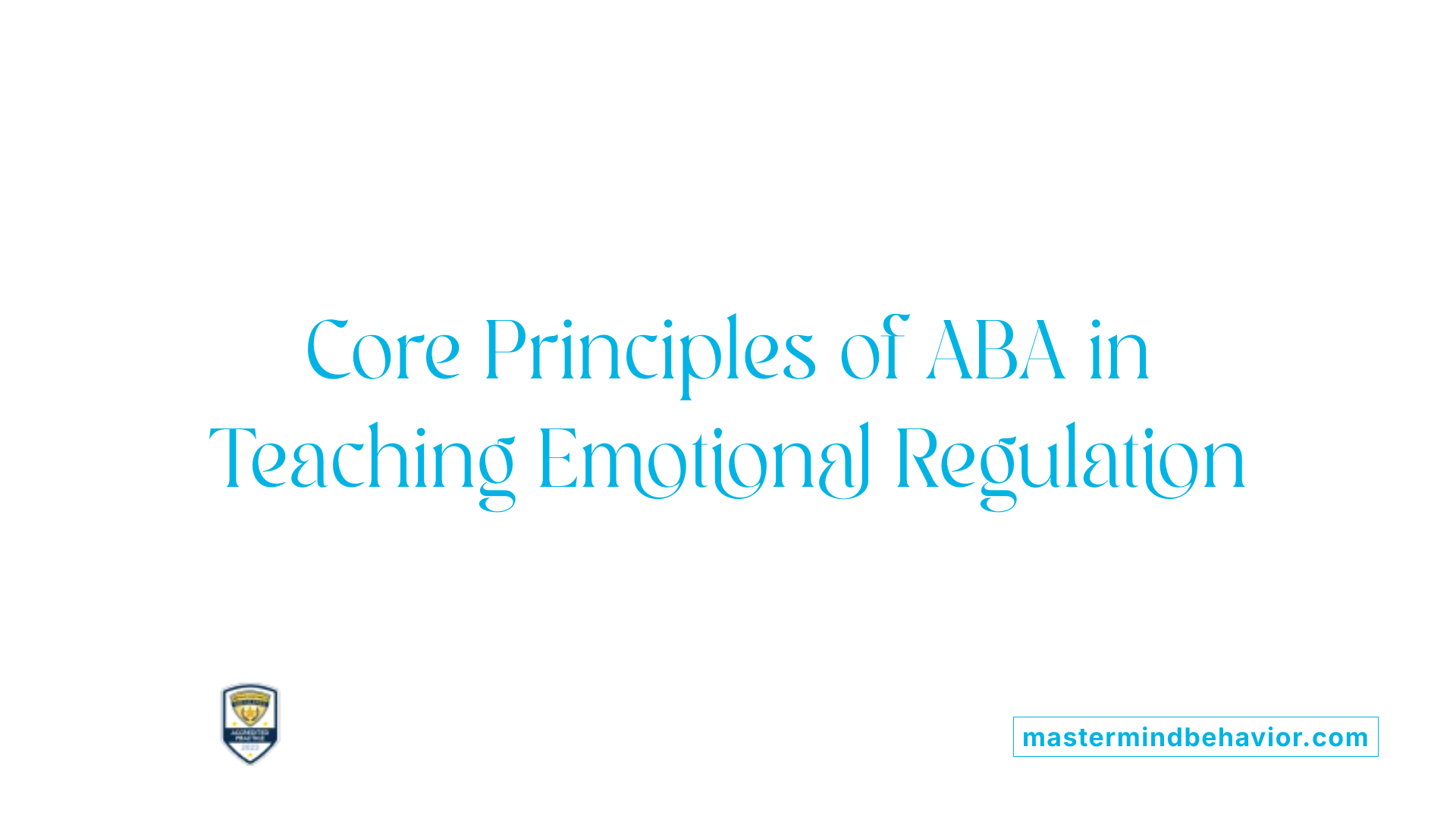
Can ABA therapy help in building emotional regulation abilities?
Yes, ABA (Applied Behavior Analysis) therapy can greatly assist in developing emotional regulation skills, especially in children with autism spectrum disorder (ASD). It relies on scientifically validated behavior modification techniques that are tailored to each individual's needs.
ABA employs strategies such as teaching children to identify and label their emotions through visual aids like emotion cards and social stories. These tools help children recognize their feelings, which is the first step toward managing them effectively.
In addition, ABA techniques include modeling self-awareness and validating emotions, which encourage children to understand and accept their internal states. Teaching coping strategies, such as deep breathing, use of sensory tools, and requesting breaks, helps children manage their emotional responses across different situations.
An important aspect is reinforcing these positive behaviors through praise and rewards. This reinforcement motivates children to use their new skills consistently, fostering independence and emotional resilience.
Family involvement plays a vital role in this process. Parent training on how to reinforce regulation strategies at home ensures consistency and generalization of skills across environments.
Overall, ABA’s personalized, evidence-based approach makes it effective for teaching children to handle emotional situations better, reducing outbursts and supporting their overall social and daily functioning.
Techniques and Strategies to Foster Emotional Regulation
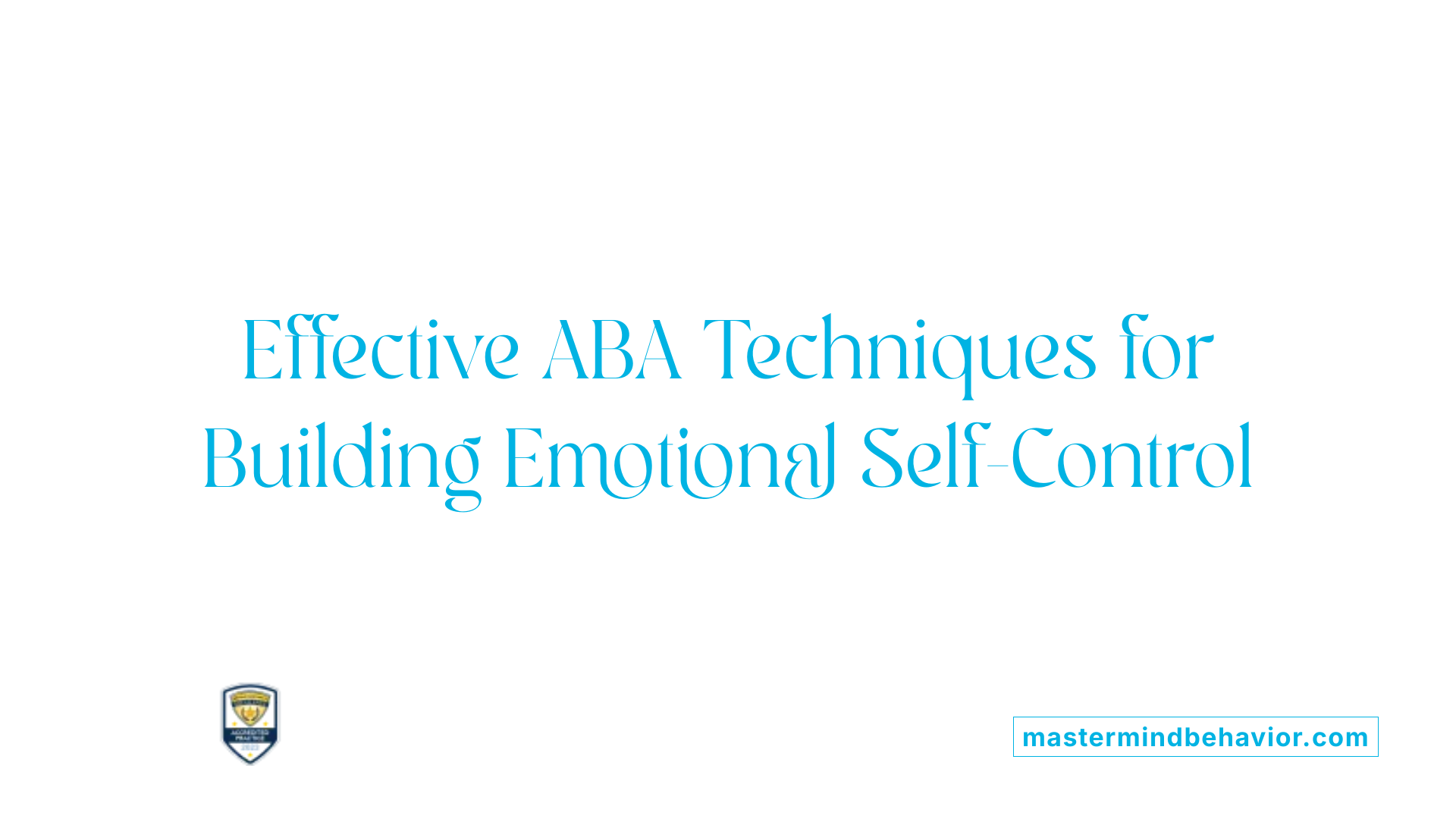
What techniques and strategies are used in ABA therapy to foster emotional regulation?
Applied Behavior Analysis (ABA) offers a range of effective methods to help children develop better emotional self-control. One fundamental approach is the use of positive reinforcement, which encourages children to employ coping behaviors like deep breathing or asking for a break by rewarding these actions.
Modeling and role-playing are also central components. Practitioners and caregivers demonstrate appropriate emotional responses, allowing children to observe and imitate these behaviors in a safe, controlled environment.
Visual supports play a crucial role in helping children recognize and communicate their emotions. Tools such as emotion charts, social stories, and the Incredible Five Point Scale visually depict different feelings and intensity levels, aiding children in understanding and labeling their emotions.
Functional Communication Training (FCT) is another vital strategy. It teaches children to express their needs and frustrations verbally or through alternative communication methods, such as PECS or AAC devices, reducing emotional outbursts caused by unmet needs.
Teaching coping strategies like requesting breaks, using sensory tools, or practicing calming activities helps children manage their emotional states effectively. Systematic practice and reinforcement of these skills across various settings build resilience and independence.
Overall, ABA combines these techniques—visual supports, modeling, communication training, and coping skills—to support children in navigating their emotions, leading to improved social interaction, reduced tantrums, and greater emotional stability.
Benefits of ABA in Enhancing Emotional Skills
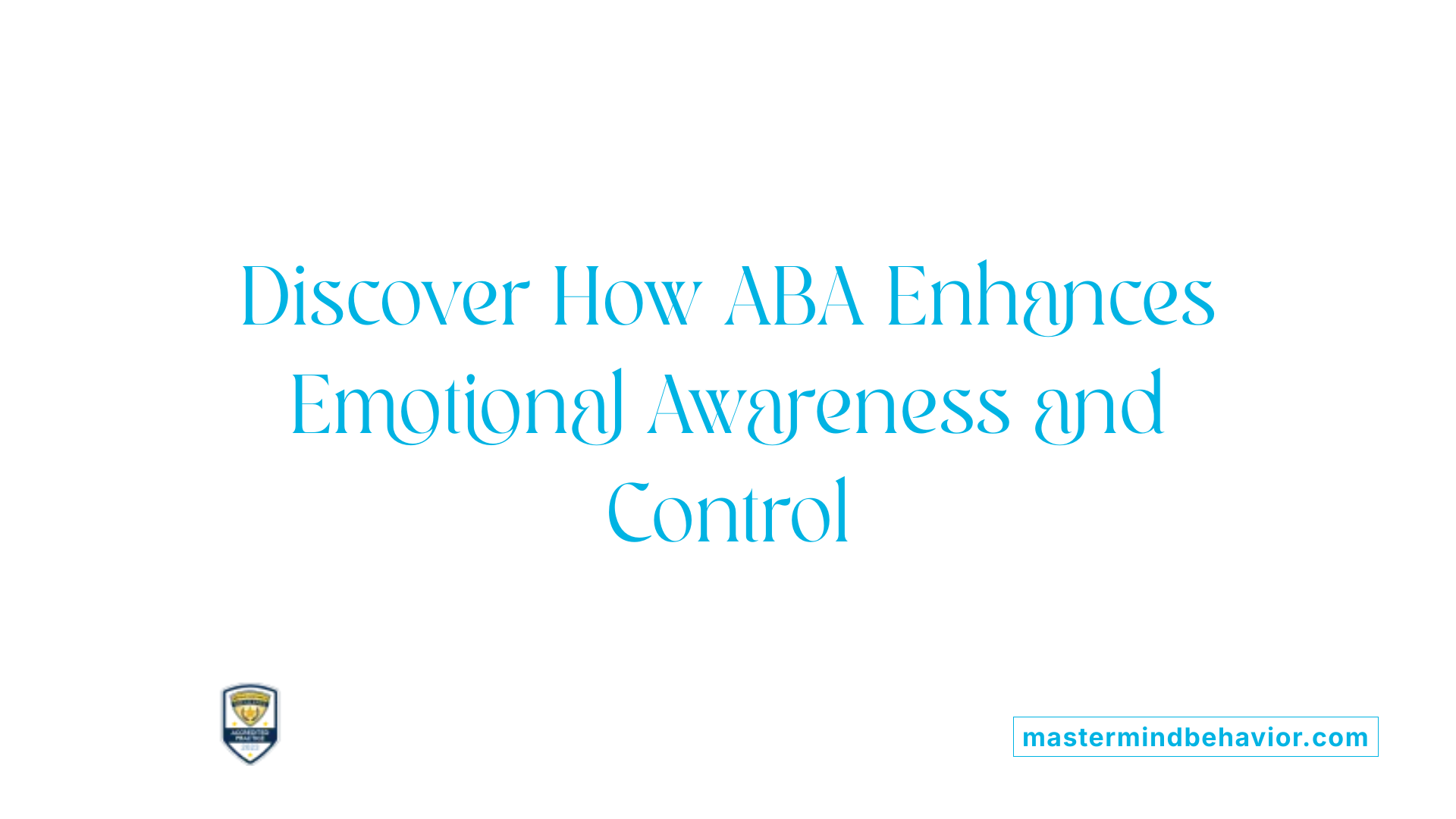
What are the benefits of ABA therapy for emotional regulation in children with autism?
ABA therapy provides many advantages in helping children develop better emotional control and understanding. A central focus is teaching children to recognize and label their feelings accurately. Using visual aids such as emotion cards, social stories, and color-coded zones like the Zones of Regulation, children learn to identify their internal states and express emotions appropriately.
These techniques not only foster emotional awareness but also reduce the frequency and intensity of emotional outbursts like meltdowns. By identifying triggers—whether they are sensory overload, communication frustrations, or environmental stressors—therapists can create tailored interventions. Strategies such as teaching calming techniques like deep breathing, offering visual supports, and using scheduled breaks help children manage overwhelming feelings.
Developing self-control and coping skills is another core benefit. Through role-playing, reinforcement, and gradual exposure to stressors, children learn functional ways to respond during challenging moments. For example, they may learn to request a break instead of tantrums, or use a calming toolbox filled with sensory tools like noise-canceling headphones or sensory bottles.
The positive impact extends to social interactions. ABA promotes understanding social cues and practicing appropriate responses, which foster healthier peer relationships. Effective communication and emotional regulation combined support greater independence and adaptive functioning.
Overall, ABA's evidence-based methods foster emotional stability, reduce disruptive behaviors, and enhance social and daily living skills. This comprehensive approach equips children with autism to navigate complex emotional environments more effectively, leading to better social integration and improved quality of life.
Developing Emotional Awareness and Self-Monitoring
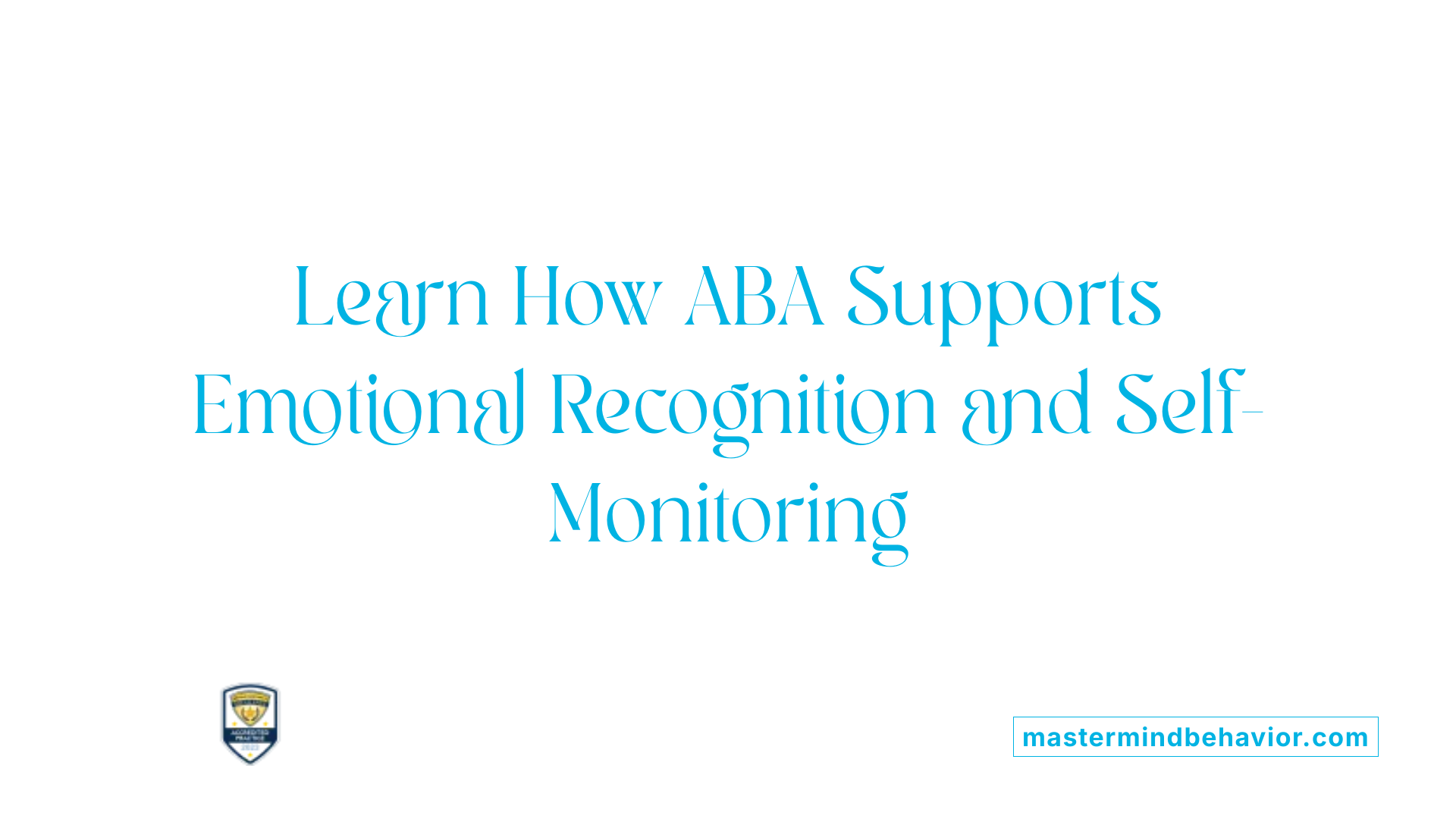
How does ABA therapy support emotional regulation development in children?
ABA therapy plays a vital role in helping children develop emotional regulation skills. It employs a variety of structured, evidence-based techniques designed to teach children how to recognize, label, and understand their feelings. Visual supports such as emotion charts, social stories, and the Zones of Regulation program are central tools in this process.
The Zones of Regulation program uses a color-coded visual scale—Green, Yellow, Red, and sometimes Blue—to help children identify and comprehend their emotional states. This visual system makes abstract feelings more concrete, enabling children to better understand and communicate their emotions. Modeling and role-playing are used extensively to demonstrate appropriate responses, self-awareness, and validation of feelings.
Teaching coping strategies is another crucial aspect. Children learn methods such as deep breathing, requesting breaks, and using calming tools like sensory bottles or noise-canceling headphones. These techniques are reinforced consistently so children can apply them independently in real-life situations.
Data collection and behavior analysis guide the development of personalized interventions, allowing therapists to adjust strategies based on each child's needs. Over time, this systematic approach not only improves emotional awareness but also fosters self-regulation, enabling children to manage frustration, anxiety, and other challenging emotions more effectively.
In essence, ABA therapy supports emotional regulation by providing children with tools, strategies, and understanding needed to navigate their emotional landscapes. Through reinforcement, modeling, and targeted teaching, children learn to respond to their feelings adaptively, promoting greater independence and social competence.
The Role of Visual Supports and Programs like Zones of Regulation
Visual supports are a cornerstone of ABA therapy to help children manage and understand their emotions. Tools like emotion charts and visual scales make abstract feelings tangible, allowing children to recognize and label their internal states. One popular program that incorporates these elements is the Zones of Regulation.
The Zones of Regulation uses a color-coded system to categorize emotional states: Green, Yellow, Red, and sometimes Blue. Each color represents different levels of alertness and emotional intensity. For example, Green indicates a calm, focused state, while Red signals strong emotions like anger or frustration. This visual scale helps children identify their current emotional zone and understand what actions can help them regulate or shift to a more desirable state.
Modeling and validation are essential components of effective implementation. Therapists and caregivers demonstrate emotional recognition and validate children's feelings, fostering self-awareness. Children are taught to observe their own emotional zones and use specific coping strategies associated with each color, such as deep breathing exercises for Yellow or taking a break when in Red.
The Zones of Regulation also promote the development of self-monitoring skills by encouraging children to verbally or visually communicate their current state. This process improves emotional awareness and prepares children to employ learned regulation strategies proactively.
In summary, visual supports like emotion charts and the Zones of Regulation play a vital role in ABA therapy by equipping children with the tools to recognize, understand, and manage their emotions. These techniques foster independence, resilience, and better social interactions, aligning with the goals of personalized, evidence-based intervention.
The Importance of Family Collaboration and Reinforcement
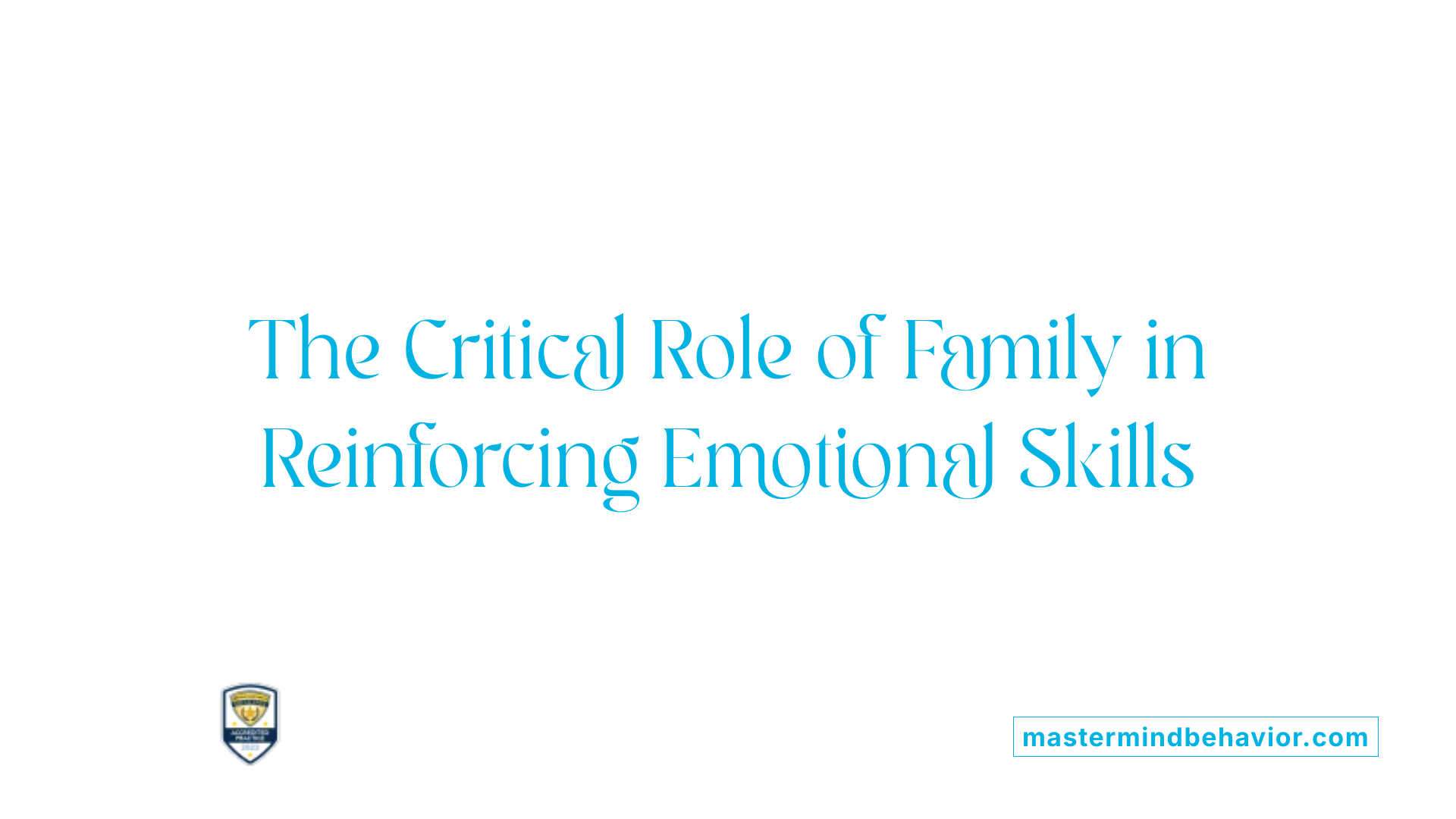 Parent training is a fundamental component of ABA therapy for emotional regulation, empowering families to implement strategies consistently across home environments. When caregivers understand how to reinforce positive behaviors and coping techniques, children are more likely to generalize emotional skills beyond therapy sessions.
Parent training is a fundamental component of ABA therapy for emotional regulation, empowering families to implement strategies consistently across home environments. When caregivers understand how to reinforce positive behaviors and coping techniques, children are more likely to generalize emotional skills beyond therapy sessions.
Skill transfer across different settings is essential. ABA therapy emphasizes the importance of reinforcing emotional regulation strategies in varied environments—home, school, or community—to ensure these skills become ingrained in daily life.
Reinforcement at home plays a crucial role in sustaining progress. Recognizing children’s efforts to employ calming tools like deep breathing, request breaks, or use visual aids encourages continued practice and mastery of emotional regulation.
How does ABA therapy support emotional regulation development in children?
ABA therapy facilitates emotional regulation through evidence-based methods such as visual charts, social stories, and programs like Zones of Regulation. These tools assist children in recognizing, labeling, and understanding their feelings, fostering self-awareness.
Therapists teach children coping strategies, including relaxation techniques, breaks, and sensory tools, often reinforcing these skills with rewards. Functional Behavior Assessments (FBA) help identify specific triggers, enabling tailored interventions to address individual emotional challenges.
Data collection and modeling further support transfer and maintenance of skills. Consistent reinforcement by families ensures that children develop adaptive emotional responses that improve social interactions and reduce challenging behaviors.
What is the role of ABA therapy in developing emotional regulation skills?
ABA therapy provides a structured approach to teaching emotional understanding through visual supports, social stories, and programs like the Zones of Regulation. These interventions assist children in identifying and labeling feelings, which is foundational for self-regulation.
Teaching coping mechanisms such as deep breathing, requesting breaks, and using calming tools is central to this process. Functional Behavior Assessments help uncover emotional triggers, allowing therapists to customize interventions.
Reinforcing successful management of emotions encourages independent use of these strategies. By involving families in training and reinforcement, ABA therapy fosters consistent emotional regulation development across all environments, leading to improved social skills, independence, and resilience.
Fostering Emotional Growth through Evidence-Based Practices
Incorporating ABA therapy into a child's developmental journey offers a robust pathway for cultivating emotional regulation skills. Through tailored strategies like visual supports, social stories, and the Zones of Regulation, children learn to identify and manage their feelings effectively. Reinforcing positive behaviors, promoting self-awareness, and involving families in consistent practice across settings solidify these vital skills. As a result, children can experience increased emotional resilience, better social interactions, and greater independence, laying a foundation for long-term emotional wellbeing. The evolving nature of ABA continues to enhance its capacity to foster emotional growth, making it an invaluable resource for supporting children with autism and other developmental challenges.
References
- Practical Strategies to Teach Emotional Regulation Skills in ABA ...
- How ABA Therapy Supports Emotional Regulation in Children
- ABA Therapy for Emotional Regulation: From Meltdowns to Mastery
- Tackling Challenges from Executive Functioning to Emotional ...
- From Meltdowns to Calm:ABA Therapy Strategies for Managing ...
- The effectiveness of applied behavior analysis program training on ...
- How ABA Therapy Prepares Kids for Life Experiences
- Emotion Regulation: Concepts & Practice in Autism Spectrum Disorder









